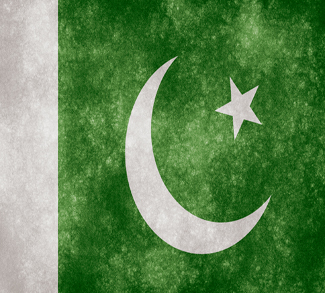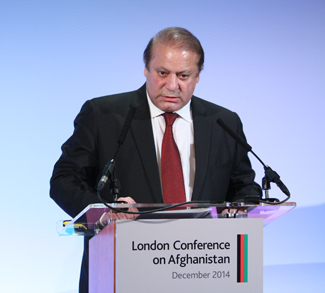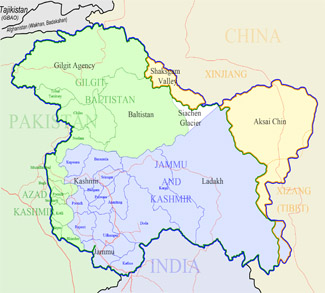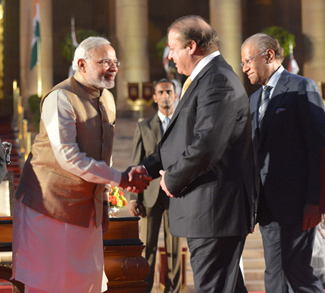A church in Pakistan’s northwestern region of Peshawar was the site of renewed terrorist violence on September 22, 2013. In one of the deadliest suicide attacks in Pakistan in years, a suicide bomber killed 78 people and left more than 100 others wounded. Pakistan’s Interior Minister Chaudhry Nisar Ali Khan remarked that, “[s]uch an attack on women and children is against humanity.” During that month, a 40% rise in terrorism was reported with 284 people becoming victims of terrorist violence. Conflict Monitoring Centre’s monthly security report noted that 215 violent attacks had taken place in September alone.
The following year saw the Peshawar school massacre take place on December 16, when seven militants left 141 dead, of which 132 were children. According to the Global Terrorism Database (GTB/START) of the University of Maryland, 2013 represents the highpoint of terrorist incidents in Pakistan with approximately 2,200 having been recorded for that year. Subsequent years show a precipitous drop, about 2,000 for 2014 and over 1,000 for 2015. On Easter Sunday, March 27, 2015, another 75 people were killed with over 300 injuries reported after a suicide bomber detonated his explosives at the entrance of Gulshan-e-Iqbal Park in Lahore. On January 20, gunmen of the militant Islamic group Tehrik-e-Taliban (TTP) attacked Bacha Khan University in northwestern Pakistan, killing over 20 students and staff. Security forces managed to kill the militants.
Raja Nasir Abbas, Secretary General of Majlis-e-Wahdat-e-Muslimeen, uttered that Pakistan’s “weak policies” has contributed to terrorism in Pakistan in recent years. While his statement sharply criticizes the abilities of the Pakistani government to manage acts of political violence and aggression within its own borders, there is song in the silence. The reasons behind Pakistan’s terrorist plague extend beyond the perceived weaknesses of its policies. The structural fragility of the Pakistani state is the most predominant but certainly not the only factor to consider.
Restraint in the use of security forces in region-specific contexts and the unanimous declaration of peace talks have recently been used as the most convenient modes of explaining waves of terrorism over the past year. Prospects for the future of terrorism is Pakistan have also been attached to that same declaration. Such accounts, though, may be too shallow and provide little, if any, analytical weight so long as a view to addressing terrorism in Pakistan as a long-term problem is nurtured. Power coupled with the structural weakness of the Pakistani state has done much to cultivate terrorist activity not merely over previous years, but rather decades. Pakistani politics to begin with is almost entirely entrenched in power, cronyism, and family.
Political authorities have failed to obtain the political capacities necessary to address the state’s endemic corruption, poverty, and poor education programs above and beyond a lack of willingness in relinquishing hold on privileged government positions. State resources (which remain scant) are apportioned to the military and state-level officials and others who are willing to provide assistance to the state by other means. The government has also crashed when it comes to delivering on the most basic services within the country. Consequently, security forces remain underfunded, ill-equipped, and are poorly trained, while a faulty judicial system has smoothed the planning and implementation of terrorist militant operations within Pakistani borders and in adjacent regions.
Ongoing conflict in the disputed territory of Kashmir is one of the main drivers of terrorism in Pakistan. Conflict there is part-and-parcel to a much larger problem with its powerful neighbor to the east. Power dynamics between India and Pakistan have long strained the Pakistani military and applied pressure to Pakistan on many levels. India’s profound effect on Islamabad’s foreign policy has also left the country financially drained. Continuing to promote the corrosive effects that the ongoing conflict in Kashmir has had on the stability of Pakistan as a state (including its ability to stand-up to an India that continues to flex its muscles) remains in India’s best interest. An effect of this policy has been the continued degradation of Pakistan’s capacity for internal governance, even if it means the fostering of terrorist militants that might spill over into India.
From Delhi’s perspective, addressing isolated instances of militant terrorist activities does not present such a bleak picture so long as the byproduct is a prostrate Pakistan. Delhi has also gone to great lengths to foster the growth of instability from the inside. Retired Indian Army chief General Vijay Kumar Singh has recently admitted that the Indian government sponsored terrorism in Pakistan by sending money to separatists in Balochistan. Pakistan is now caught between its own terrorist threats at home and a threatening neighbor, which has continuously pulled Pakistan into a costly fear-induced arms race. Terrorism in Pakistan indeed serves a purpose for India too. However, not all of Pakistan’s terror groups are apathetic when it comes to India. A variety of militants in Pakistan stand punitively anti-India like the groups Jamaat ud-Dawa (JuD) and Jaish-e-Mohammed (JeM). The deadly Mumbai attacks in 2008 that left 170 people dead were carried out from a secure location in Karachi under the direction of Pakistan’s Directorate of Inter-Services Intelligence (ISI).
Trapped by its own historical developments, Pakistani funds allotted to the ISI have been used to support Jihadi groups with the view of putting them into action against India. Here, another trade-off has been made that applies more pressure to Pakistan as a whole. Much of this support finds its place in Kashmir. ISI-supported Jihadi groups have been actively involved in the disruption of Pakistani politics by opposing democratic movements and aligning themselves to variable degrees with other forces directly opposing democratization efforts within the country. Military forces have for that reason been playing a treacherous game with its own people including its close allies and supporters in the international community.
Questions presiding over Islam and the drivers of terrorism in Pakistan are not without warrant. A fair appraisal of Pakistani Islam, on the other hand, illustrates that violence has seeped its way into Pakistan vis-à-vis foreign schools of Islam promoted by other states (i.e., Saudi Arabia) able to easily connect with and influence the Pashtun tribes in Pakistan. These are the regions where jihad has been culturally intertwined with local inhabitants and their disposition toward foreign invaders. Religious beliefs are thus less significant a factor than has been suggested. Islamabad’s inability to properly integrate some parts of the country with others has also fueled violence in the country.
Despite Pakistan’s troubling relationship with terrorism, including its distressing rise in terrorist activity over the past year, renewed activities by terrorists might compel analysts to re-examine the roots of violent and militant extremism in the country. Traditional, or previously accepted “causes” of terrorism in Pakistan might therefore come into question and receive renewed scrutiny. Accordingly, the ostensible continuity of terrorism, tragic as it may be, might actually provide an opportunity to see potential pathways for recovery and ways of tempering the virulent terrorist challenge in and around Pakistan in the near future.
Terror has continued to manifest itself and to this day Pakistani governments have not been able to control, let alone curb this growing threat. Despite claims that the Pakistani government is finally winning the fight against terrorism, the past several years, if not decades, illustrate the degree to which Pakistan’s terror groups, which were once seen as strategic tool vis-à-vis India has become fully entrenched as a critical security crisis for the country, and one that increasingly seems less likely to be controlled.
The situation again raises questions about the possibility of Pakistan becoming a failed state, and what would happen to the nuclear arsenal of the country if that were to happen. The Federally Administered Tribal Areas (FATA) were never properly integrated into the rest of the Pakistan, and other parts of Pakistan are showing signs of deep cleavage. Increasingly. Balochistan and the Pakistan-Indian border are destabilizing as well. While both states appear willing to confront and combat the overwhelming number of terrorist groups operating on both sides of the border, neither state has shown with any compelling force that they possess the capabilities to do so effectively.
The opinions, beliefs, and viewpoints expressed by the authors are theirs alone and don’t reflect any official position of Geopoliticalmonitor.com.




